Gorenje R6299W Handleiding
Bekijk gratis de handleiding van Gorenje R6299W (6 pagina’s), behorend tot de categorie Koelkast. Deze gids werd als nuttig beoordeeld door 44 mensen en kreeg gemiddeld 5.0 sterren uit 22.5 reviews. Heb je een vraag over Gorenje R6299W of wil je andere gebruikers van dit product iets vragen? Stel een vraag
Pagina 1/6

Instructions for Use 9
Refrigerator GB
Thank you for your trust and for buying this appliance. We hope it will
successfully serve the purpose for many years.
Refrigerator is for domestic use only and is intended for
storing fresh foods at the temperature higher than 0°C.
Before Putting Into Use.................................................. 9
Instructions for Use
We Care for the Environment
Tips for Energy Savings
Important ...................................................................... 10
Disposing of the Worn Out Appliance
Placing and Installation ............................................... 10
Choosing the Right Place
Placing the Self-standing Appliance
Connection to Power Supply
Description of the Appliance ....................................... 11
Operation Control.........................................................12
Temperature Selection
Use ..................................................................................12
Storing Fresh Foods
Maintenance and Cleaning...........................................13
Automatic Defrosting of the Refrigerator
Cleaning the Appliance
Switch Off the Appliance When Not In Use
Changing the Direction of Opening the Door .............13
Trouble-Shooting Guide ...............................................14
Before Putting Into Use
• Before connecting the appliance to the mains supply, leave it
stand for about 2 hours, which will reduce a possibility of
malfunctions in the cooling system due to transport handling.
• Clean the appliance, and be thorough, especially in the
interior (See Cleaning and Maintenance).
• In case the interior accessories are not correctly placed,
rearrange them as described in chapter Description of the
Appliance.
Instructions for Use
These instructions for use are intended for the user. They
describe the appliance and its correct and safe use. They were
prepared for various types/models of refrigerators therefore you
may find in it description of some functions and accesories that
your appliance does not have.
We Care for the Environment
• Our products use environmentally friendly packaging, which
can be either recycled or disposed of in an environmentally
friendly manner. To this end, individual packaging materials
are clearly marked.
• These instructions are printed either on recycled paper or
chlorine free bleached paper.
• When your appliance finally wears out, please try not to
burden the environment with it; call your nearest authorised
service agent. (See Disposing of the Worn Out Appliance)
Tips for Energy Savings
• Try not to open the door too often, especially when the
weather is wet and hot. Once you open the door, mind to
close it as soon as possible. This is especially important if
you have an upright model.
• Every now and then check if the appliance is sufficiently
ventilated (adequate air circulation behind the appliance).
• Set thermostat from higher to lower settings as soon as
possible (depends on how loaded the appliance is, ambient
temperature etc).
• Before loading the appliance with packages of fresh foods,
make sure they are cooled to ambient temperature.
• Ice and frost layer increase energy consumption, so do
clean the appliance as soon as the layer is 3-5 mm thick.
• If the gasket is damaged or if it turns out that the sealing is
poor, the energy consumption is substantially higher. To
restore efficiency, replace the gasket.
• The condenser on the rear wall should be always clean, free
of dust or any impurities.
• Always consider instructions stated in sections Positioning
and Energy Saving Tips, otherwise the energy consumption
is substantially higher.

Instructions for Use
10
Important
• If you have bought this appliance to replace an old one
equipped with a lock that cannot be opened from inside
(lock, bolt), make sure that the lock is broken. This will make
it impossible for children to lock themselves inside the
appliance and suffocate.
• The appliance must be correctly connected to the mains
supply. (see: Connecting to the Mains Supply).
• If the food has strange smell or color, throw it away, because it is
very likely that it is spoiled and therefore dangerous to eat.
• Disconnect the appliance from the power supply before
repairing it (only a qualified technician should repair it),
before cleaning and before replacing the light bulb.
• Do not defrost the appliance with other electric appliances
(as for example with hair dryer) and never scrape the frost
layer with sharp objects. Use only enclosed tools or tools
recommended by the manufacturer.
• For the sake of environment protection - be careful not to
damage the rear wall of the appliance (the condenser unit or
the tubes - for example when moving the appliance) or any
part of the refrigerating system inside the appliance.
• The refrigerating system of the appliance is filled with refrigerant
and oil, so when the appliance is damaged, handle it with care
and dispose it of in compliance with environmental protecting
precautions. (See We Care for the Environment).
• In the supply cord is damaged, it must be replaced by the
manufacturer or his service agent or a qualified person in
order to avoid hazard.
• The rating plate is inside the appliance or outside on the rear wall.
The symbol on the product or on its packaging
indicates that this product may not be treated as
household waste. Instead it shall be handed over to
the applicable collection point for the recycling of
electrical and electronic equipment. By ensuring this product
is disposed of correctly, you will help prevent potential
negative consequences for the environment and human
health, which could otherwise be caused by inappropriate
waste handling of thisproduct. For more detailed information
about recycling of this product, please contact your local city
office, your household waste disposal service or the shop
where you purchased the product.
Disposing of the Worn Out Appliance
• When your appliance finally wears out, dispose it of. If the
appliance has a lock, break it, in order to prevent eventual
accidents (danger of children get locked inside the appliance).
• The refrigerating system of the appliance is filled with
refrigerant and insulating substances which should be
separately treated and processed. Call your nearest
authorised service agent or specialised servicing centre. If
you don't find one, contact your local authorities or your
distributor. Be careful not to damage the tubes on the rear
wall of the appliance (danger of pollution).
Placing and Installation
Choosing the Right Place
Place the appliance in a dry and regularly ventilated room. Allowed
ambient temperature depends on the model (class) of the
appliance and is stated on the rating plate of the appliance.
Never place the appliance near heat emitting devices (e.g. cooker,
radiator, water heater or similar devices) and do not expose it to
direct sunlight. The appliance should be positioned at least 3 cm
away from the electric or gas cooker and at least 30 cm away from
the oil or coal stove. If this is not possible, use an appropriate
insulation. Behind the appliance there should be free space at least
200 cm˛ wide and above the appliance the high kitchen units
should be at least 5 cm away from the appliance in order to assure
adequate ventilation of the condenser unit.
Class Ambient temperature
SN (sub-normal) from + 10°C to + 32°C
N (normal) from + 16°C to + 32°C
ST (sub-tropical) from + 16°C to + 38°C
T (tropical) from + 16°C to + 43°C
Placing the Self-standing Appliance
• Place the appliance firmly on a solid base. Some appliances
have adjustable feed on the front side; use them to level the
appliance.
• Two spacers attached to the appliance must be fitted onto
the upper edge of the condenser, thus preventing the
appliance from being installed too close to the wall. Spacers
are manufactured for all-purpose function depending on the
distance of the condenser from the wall. Therefore turn
spacers correspondingly and fix them to the appliance.
• The appliance may stand freely or it can be placed next to a
kitchen furniture element or a wall. Mind the space required
to open the door and pull out the drawers and shelves (see
installation diagram).
35 mm
90o
Connection to Power Supply
Connect the appliance with the cable and plug to the power supply
socket outlet with a ground terminal (safety socket). Required
nominal voltage and frequency are indicated on the rating plate.
The connection to the mains supply and earthing have to be
made according to current standards and regulations. The
appliance resists temporary voltage tolerance up to -6 to +6 %.

Instructions for Use 11
Description of the Appliance
1
Shelf (1)
(the number of shelves depends on model)
Shelf can be optionally placed on the guides inside the
appliance. It is protected against pulling out. If you want to
remove it, slightly lift up the back part and pull it out.
Quickly perishable food should be stored on the back i.e. the
coldest part of the shelves.
Bottle rack
(only some models have it)
Bottle rack (number depends on model) is intended for storing
the bottles. There are two installation positions available
(horisontal or lifted in the font) thus enabling the positioning of
bottles on the stopper as well.
It is protected against the extraction. If you want to extract it,
lift its rear part and pull towards yourself.
Warning!
When storing longer bottles, install the rack on higher position
not disturbing the closing of the door inner liner (vessels,
bottles or food stored in the door), however its positioning on
guides in the appliance is optional.
Defrost Water Outlet (2)
The interior of the refrigerator is cooled with cooling plate
incorporated in the rear wall. Under the plate there is a channel
and an outlet for defrost water.
Regularly check the defrost water outlet and the channel,
because they should never be clogged (as for example with
food rests). If clogged, use a plastic straw and clean it.
Fruit and Vegetable Container (3)
The container is on the bottom of the appliance under the glass
shelf. It provides adequate humidity which has favourable
effect on fruit and vegetables stored in it (less dehydration).
Bottle stopper (4)
(in some models only)
The bottle stopper (number depends on the model) prevents
the bottles from moving in the door rack.
The fan
(certain models only)
• The fan distributes evenly the inside temperature and
reduces dew on storage shelf surfaces.
• When the refrigerator door is opened, the fan stops
operating.
• It is recommended to switch the fan on:
− when the ambient temperature in the room is increased
(above 30°C),
− in case of increased humidity (during summer season).
• Switching the fan on/off
ON = OFF =
0
Note: Energy consumption is increased during fan operation.
Product specificaties
| Merk: | Gorenje |
| Categorie: | Koelkast |
| Model: | R6299W |
Heb je hulp nodig?
Als je hulp nodig hebt met Gorenje R6299W stel dan hieronder een vraag en andere gebruikers zullen je antwoorden
Handleiding Koelkast Gorenje
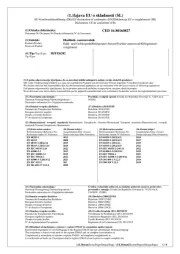
5 September 2025
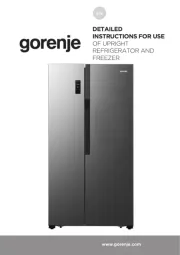
5 September 2025
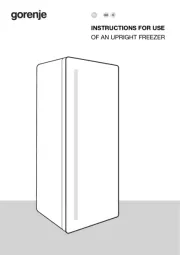
4 September 2025
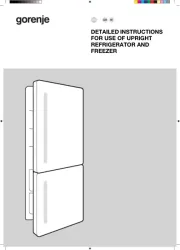
4 September 2025
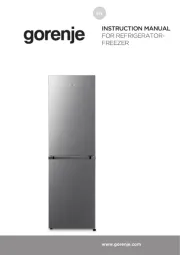
4 September 2025
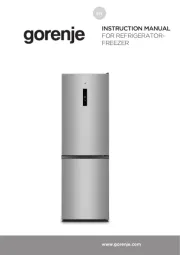
4 September 2025
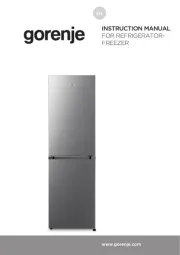
4 September 2025
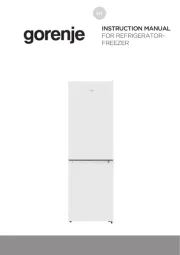
4 September 2025
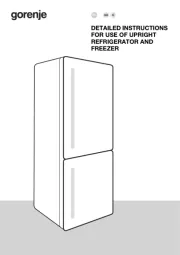
8 Augustus 2025
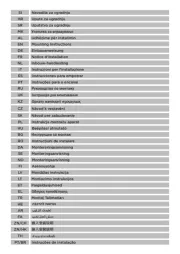
19 April 2025
Handleiding Koelkast
- Junker
- Marvel
- Leisure
- Dellware
- Parmco
- Summerset
- Salton
- Privileg
- Dimplex
- Cecotec
- Chefman
- Hestan
- Tricity Bendix
- LeCavist
- Thermador
Nieuwste handleidingen voor Koelkast
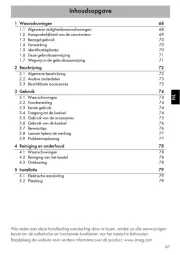
18 September 2025
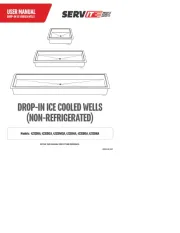
18 September 2025
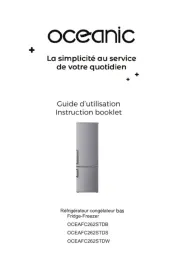
17 September 2025
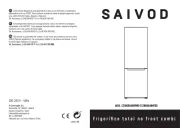
16 September 2025
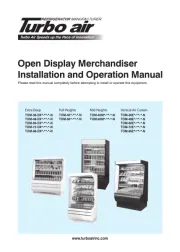
16 September 2025
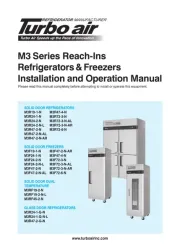
16 September 2025
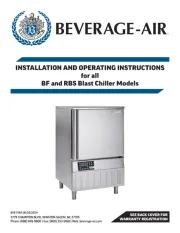
16 September 2025
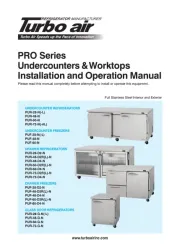
16 September 2025
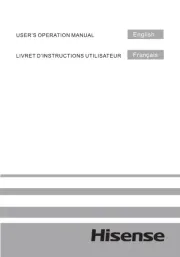
16 September 2025
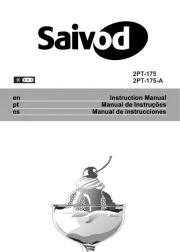
16 September 2025